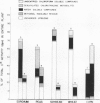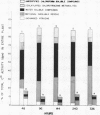Abstract
Metabolism of the herbicide 2-chloro-4-ethylamino-6-isopropylamino-s-triazine (atrazine) was investigated in resistant corn (Zea mays L.) and sorghum (Sorghum vulgare Pers.), intermediately susceptible pea (Pisum sativum L.), and highly susceptible wheat (Triticum vulgare Vill.) and soybean (Glycine max Merril.). This study revealed that 2 possible pathways for atrazine metabolism exist in higher plants. All species studied were able to metabolize atrazine initially by N-dealkylation of either of the 2 substituted alkylamine groups. Corn and wheat, which contain benzoxazinone, also metabolized atrazine initially by hydrolysis in the 2-position of the s-triazine ring to form hydroxyatrazine. Subsequent metabolism by both pathways resulted in the conversion of the parent atrazine to more polar compounds and eventually into methanol-insoluble plant residue. No evidence for s-triazine ring cleavage was obtained.
Both pathways for atrazine metabolism appear to detoxify atrazine. The hydroxylation pathway results in a direct conversion of a highly phytotoxic compound to a completely non-phytotoxic derivative. The dealkylation pathway leads to detoxication through one or more partially detoxified, stable intermediates. Therefore, the rate and pathways of atrazine metabolism are important in determining the tolerance of plants to the herbicide. Both quantitative and qualitative differences in atrazine metabolism were detected between resistant, intermediately susceptible, and susceptible species. The ability of plants to metabolize atrazine by N-dealkylation and the influence of this pathway in determining tolerance of plants to atrazine are discussed.
Full text
PDF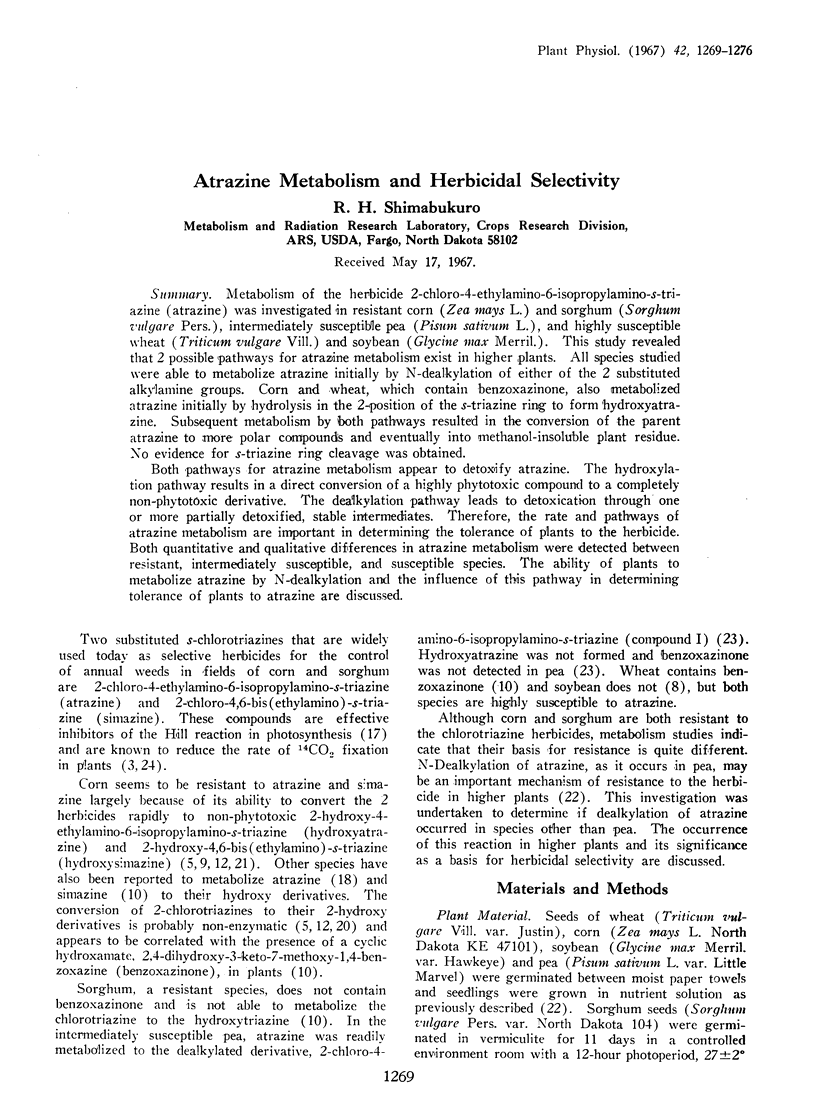
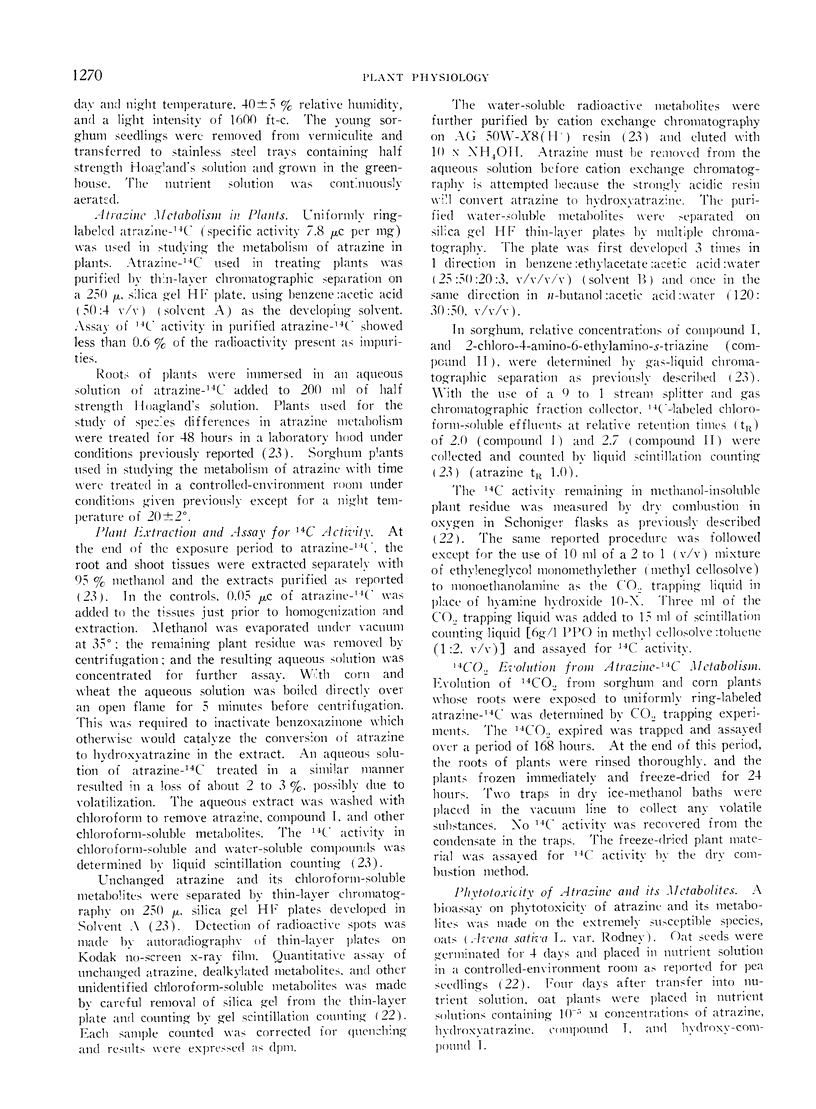
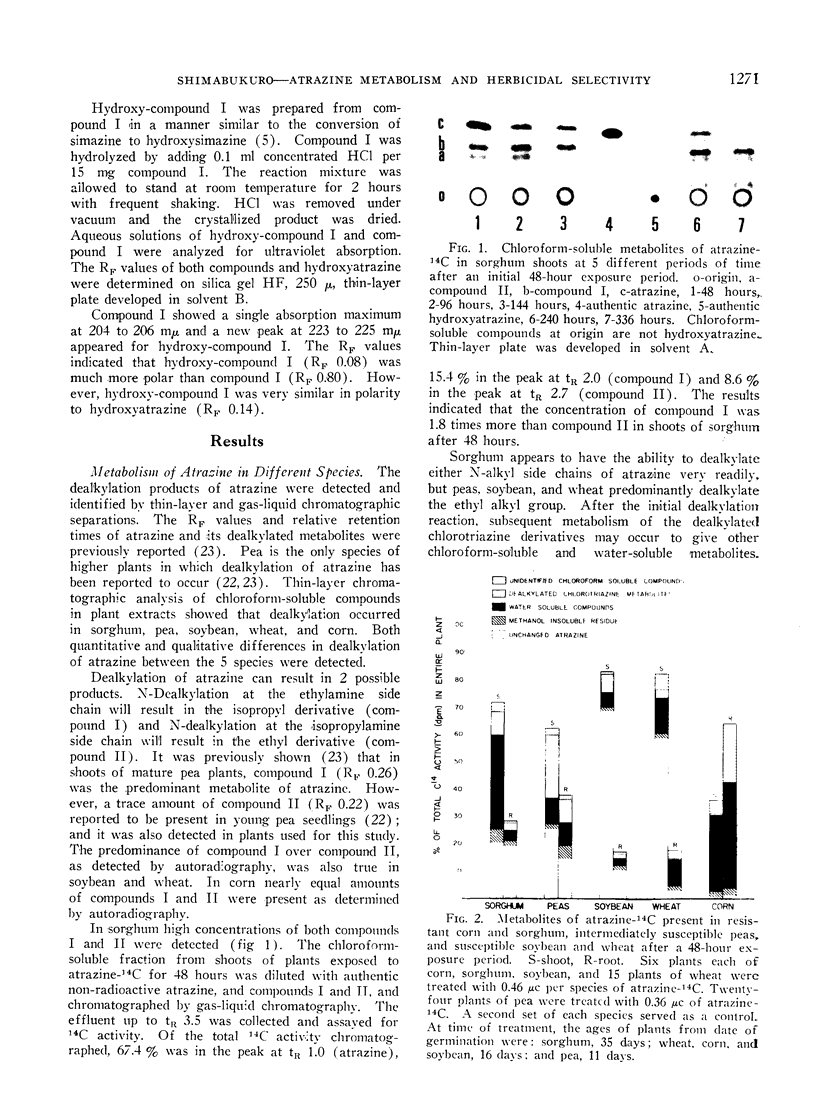
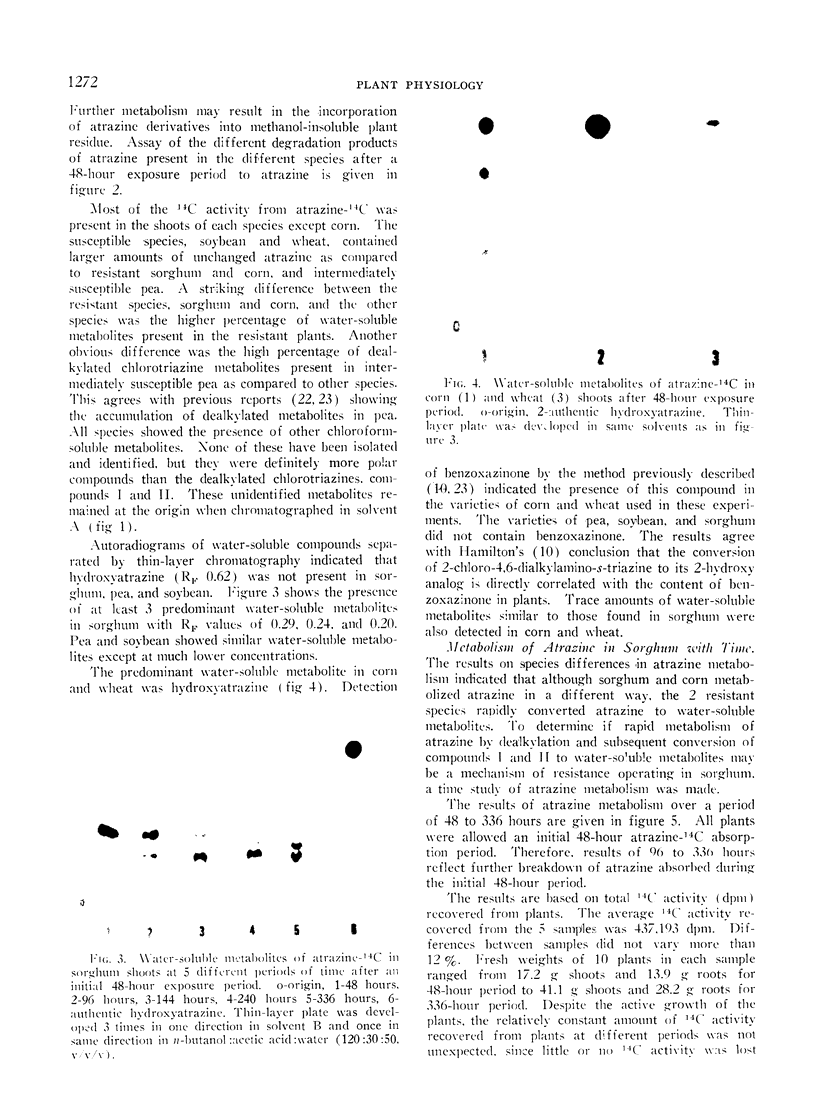
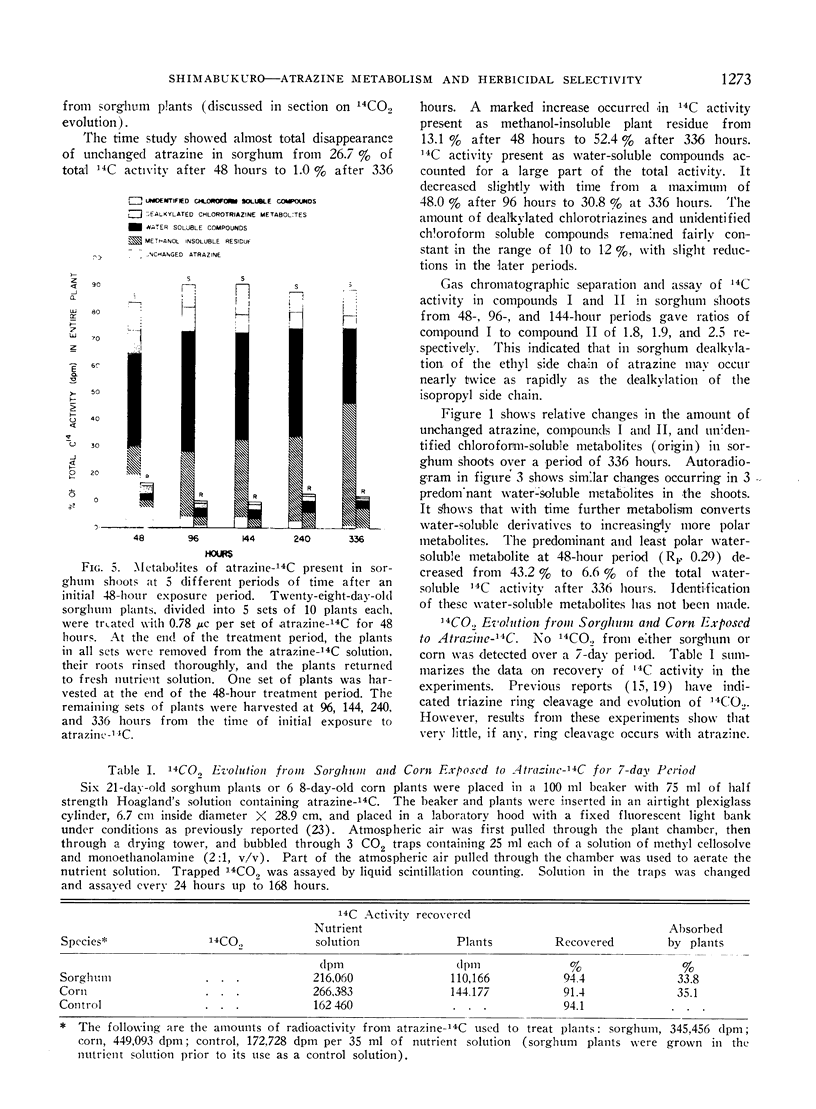
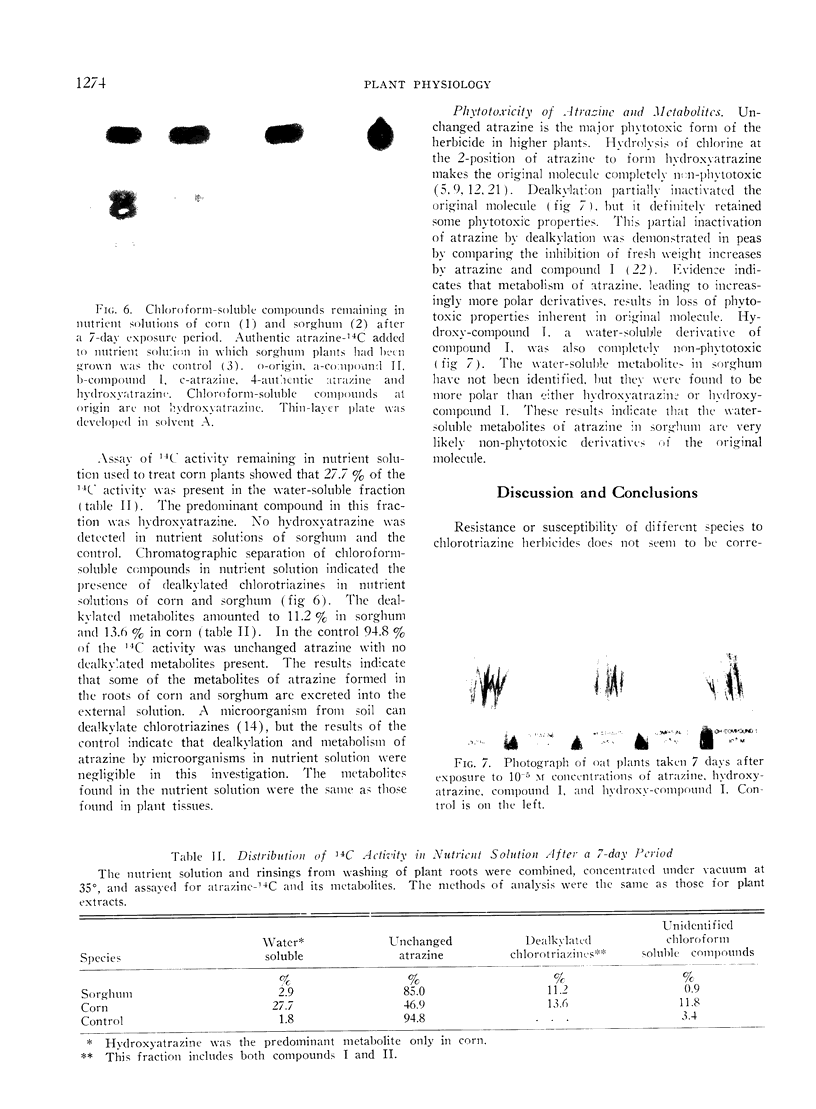
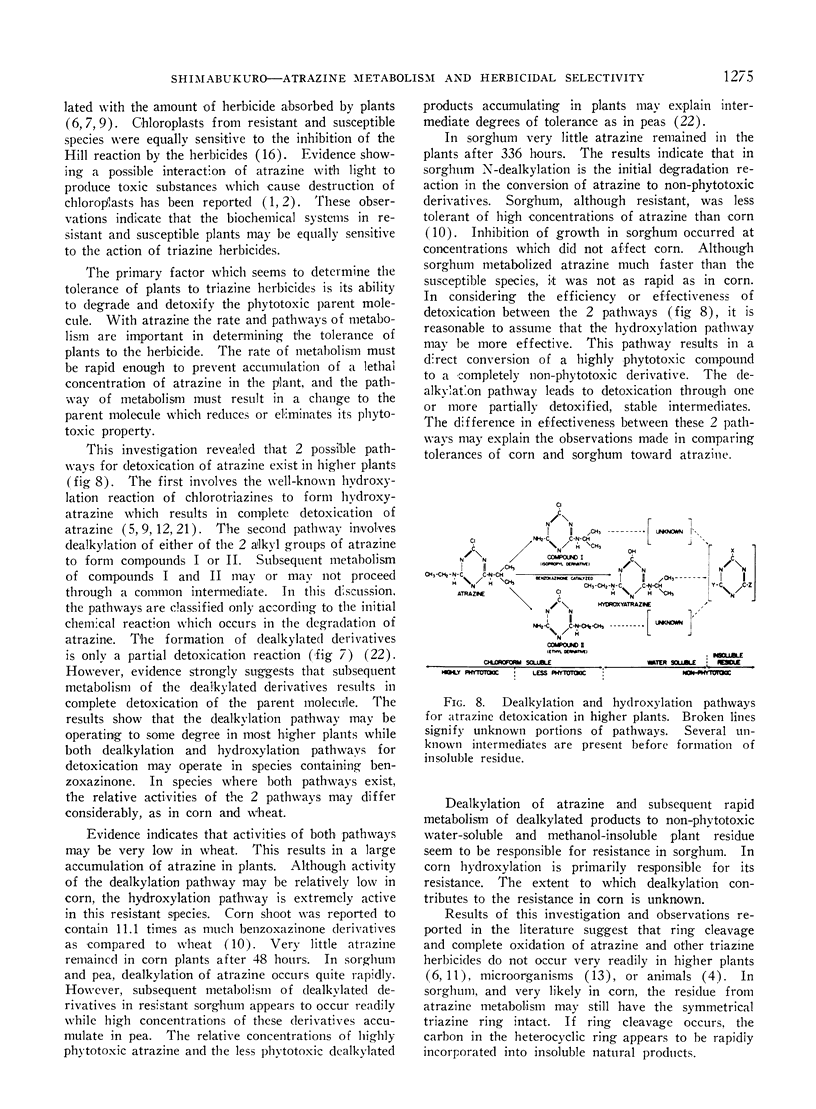
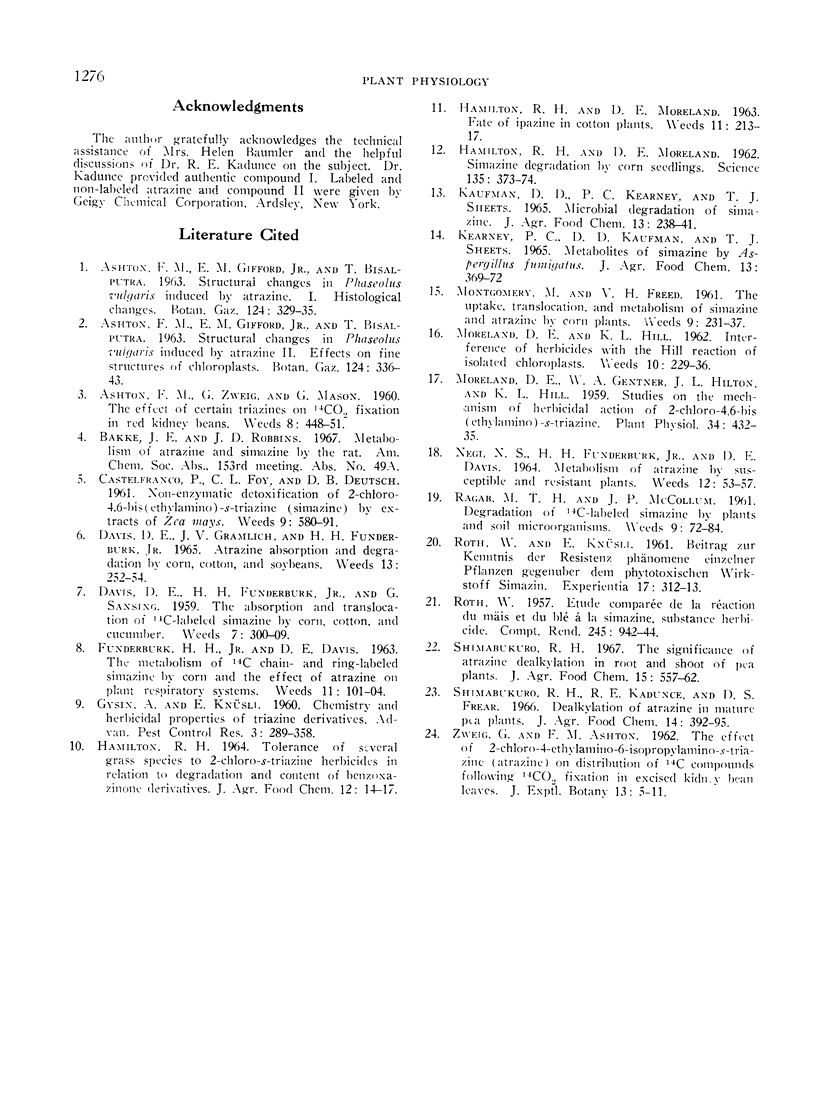
Images in this article
Selected References
These references are in PubMed. This may not be the complete list of references from this article.
- Hamilton R. H., Moreland D. E. Simazine: Degradation by Corn Seedlings. Science. 1962 Feb 2;135(3501):373–374. doi: 10.1126/science.135.3501.373. [DOI] [PubMed] [Google Scholar]
- Moreland D. E., Gentner W. A., Hilton J. L., Hill K. L. Studies on the Mechanism of Herbicidal Action of 2-Chloro-4,6-Bis(Ethylamino)-S-Triazine. Plant Physiol. 1959 Jul;34(4):432–435. doi: 10.1104/pp.34.4.432. [DOI] [PMC free article] [PubMed] [Google Scholar]




